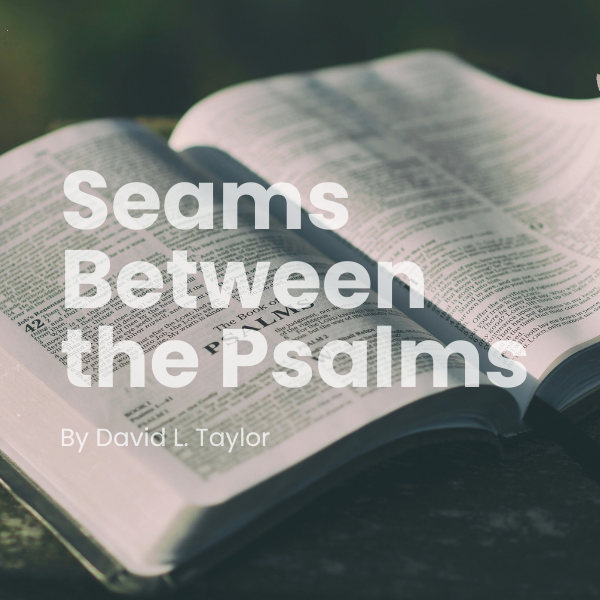
A handful of years ago, I had the wild idea to purchase a set of multi-colored highlighters and mark word repetition in the Psalms. I do not know what I expected to happen at the outset of this project, but with each pass through the book, I continued to notice additional repeated words and phrases in each poem. Perhaps the most interesting observation was how many words repeat not only within individual psalms but across multiple poems. Often times, the end of one psalm would correlate with the beginning of the next psalm, creating a seam which binds the two poems together. In this brief survey, we will examine a few examples of seams between psalms. After this, we will note what relevance such observations have for biblical interpretation and preaching.
Seams Between the Psalms
Sometimes the repetition linking two psalms consists of simple phrase or word repetition. For instance, Psalms 32 and 33 are linked by the common phrase “shout for joy”:
Ps 32:11 Be glad in the LORD, and rejoice, O righteous, and shout for joy, all you upright in heart!
Ps. 33:1 Shout for joy in the LORD, O you righteous! Praise befits the upright.
Similarly, Psalms 103 and 104 are joined by an identical exhortation:
Ps. 103:22 Bless the LORD, all his works, in all places of his dominion. Bless the LORD, O my soul!
Ps. 104:1 Bless the LORD, O my soul! O LORD my God, you are very great! You are clothed with splendor and majesty.
Occasionally, repetition at the seam of two psalms move beyond simple repetition into something more dynamic, developing an idea from the first psalm into what will be expanded on in the next. Psalms 79 and 80 are a great example of this. In Psalm 79, the poet laments the temple’s destruction and the desolation of Jerusalem. Yet, in its final verse the psalmist declares, “We are your [God’s] people, the sheep of your pasture,” and “We will give thanks to you forever” (79:13). Psalm 80 picks up on this pastoral language saying, “Give ear, O Shepherd of Israel, you who led Joseph like a flock” (80:1). By picking up the pastoral language of Psalm 79, Psalm 80 petitions God to act like a shepherd and “restore” the flock driven from their destroyed city (80:3, 7, 19).
Similar development is evident between Psalms 106 and 107. Psalm 106 is a poem written from the perspective of the exiled Judeans. In one of its final lines the psalmist cries, “Save us, O LORD our God, and gather us from among the nations, that we may give thanks to your holy name and glory in your praise” (106:47). Following this, the entirety of Psalm 107 is a glorious celebration of the salvation of God. It is no coincidence that one of the first lines of the poem says “[The LORD] gathered [the redeemed] in from the lands, from the east and from the west, and from the north and from the south” (107:3). It appears that the prayer cried by the exiled Judeans in Psalm 106 finds its answer within the following Psalm.
Though there are many more instances of repetition at the seams of psalms, I trust that these four examples will suffice to demonstrate the phenomenon. Once noticed, the natural question is “so what?”
Significance for Interpretation and Preaching
One simple conclusion we can draw from seams between the psalms is that some psalms are meant to be read together. This undermines a view that the Psalms are a random collection of Israelite poetry — a sort of hymnal — from across the centuries. If some psalms are connected by seams, then at least some psalms should be read (and interpreted) along with their conjoined poems.
Our preaching likewise should be affected by recognizing conjoined psalms. To take an example from above, if I were to preach on Psalm 107 and the various scenes of salvation it contains, it would be appropriate to exposit the salvation against the backdrop of Psalm 106’s exilic setting and its cry for deliverance. A similar homiletical technique was wonderfully described in the somewhat recent podcast by Expositors Collective, “Reading and Preaching the Psalms Chronologically and Canonically with Wyatt Graham” (published on March 26, 2024).
Finally, if word repetition at the seams of psalms indicate at least some psalms are meant to be read and interpreted together, then might not the entire Book of Psalms be intelligently arranged into a cohesive, ordered message? There is much to commend this view, but to elaborate on such matters is a subject for another post. For now, I would simply commend all readers and lovers of the Psalms to grab their highlighters, open their Bibles, and mark away.







